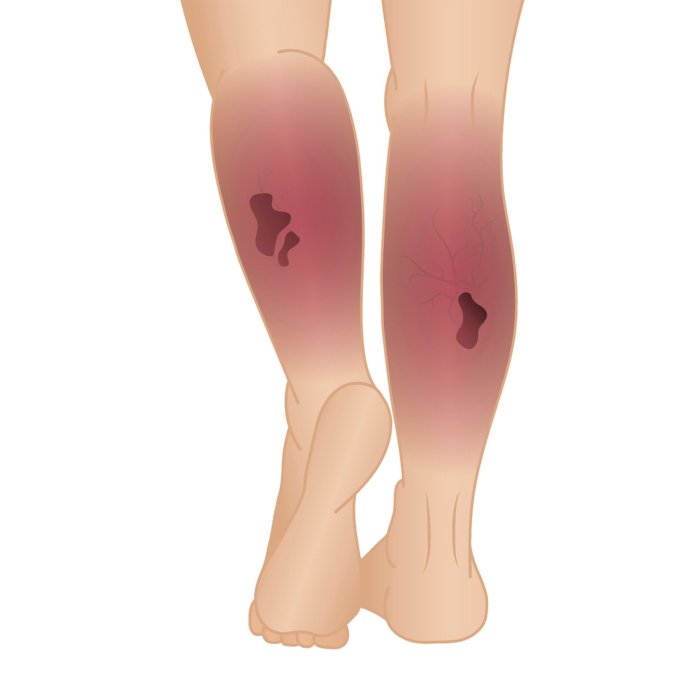Embarking on a comprehensive examination of hesi case study deep vein thrombosis, this discourse delves into the intricacies of assessing risk, clinical manifestations, and effective management strategies. By unraveling the complexities of this condition, healthcare professionals can optimize patient outcomes and mitigate the potential for severe complications.
Deep vein thrombosis (DVT) poses a significant threat to patient health, and the HESI score has emerged as a valuable tool for evaluating the risk of developing this condition. Understanding the clinical significance of a high HESI score is crucial for guiding appropriate interventions and preventing adverse events.
HES Score for Assessing Deep Vein Thrombosis (DVT) Risk: Hesi Case Study Deep Vein Thrombosis

The HESI score is a clinical prediction rule used to assess the risk of deep vein thrombosis (DVT) in hospitalized patients. It consists of six components: age, gender, history of DVT, history of cancer, immobilization, and recent surgery. Each component is assigned a score, and the total score is used to categorize patients into low, moderate, or high risk of DVT.
A high HESI score is associated with an increased risk of DVT. In one study, patients with a HESI score of 3 or more had a 10% risk of DVT, compared to 1% for patients with a HESI score of 0.
The HESI score is a useful tool for clinicians to identify patients at high risk of DVT. This information can be used to guide decisions about prophylactic measures, such as anticoagulation or mechanical prophylaxis.
Clinical Manifestations and Diagnosis of DVT, Hesi case study deep vein thrombosis
The most common symptom of DVT is pain or tenderness in the affected leg. Other symptoms may include swelling, warmth, redness, and skin discoloration. In some cases, DVT may be asymptomatic.
The diagnosis of DVT is based on clinical suspicion and imaging studies. The most common imaging study used to diagnose DVT is ultrasound. Ultrasound can visualize the veins and detect blood clots.
Other imaging studies that may be used to diagnose DVT include venography and magnetic resonance imaging (MRI).
The differential diagnosis of DVT includes other conditions that can cause similar symptoms, such as cellulitis, lymphedema, and muscle strain.
Risk Factors and Pathophysiology of DVT
The major risk factors for DVT include:
- Age (over 60 years old)
- Gender (female)
- History of DVT
- History of cancer
- Immobilization
- Recent surgery
The pathophysiology of DVT is based on Virchow’s triad, which consists of three factors: hypercoagulability, venous stasis, and endothelial damage.
Hypercoagulability is a condition in which the blood is more likely to clot. Venous stasis is a condition in which the blood flow in the veins is slowed down. Endothelial damage is a condition in which the lining of the veins is damaged.
When these three factors are present, it can lead to the formation of a blood clot in the veins.
Untreated DVT can lead to serious complications, such as pulmonary embolism (PE). PE is a condition in which a blood clot travels to the lungs and blocks an artery.
Treatment and Management of DVT
The treatment of DVT depends on the severity of the clot and the patient’s overall health.
The most common treatment for DVT is anticoagulation therapy. Anticoagulants are medications that prevent blood clots from forming or growing. Anticoagulants can be given orally or intravenously.
In some cases, thrombolysis may be used to treat DVT. Thrombolysis is a procedure in which a clot-busting medication is injected into the clot to dissolve it.
In rare cases, surgical intervention may be necessary to remove a clot from a vein.
Monitoring and follow-up care are important in DVT management. Patients on anticoagulation therapy will need to have their blood clotting time monitored regularly. Patients should also be followed up to ensure that the clot has not recurred.
Question & Answer Hub
What is the HESI score?
The HESI score is a clinical prediction rule used to assess the risk of developing deep vein thrombosis (DVT).
What are the components of the HESI score?
The HESI score is based on several clinical factors, including age, gender, body mass index, history of DVT, and the presence of certain medical conditions.
How is the HESI score used in clinical practice?
The HESI score is used to help clinicians determine which patients are at high risk for DVT and should receive prophylactic anticoagulation.

